Khao Soi Maemani, a special recipe of Khao Soi from Maemani, with quality and taste that are better than the shop’s appearance.Khao Soi Maemani, a special recipe of Khao Soi from Maemani, with quality and taste that are better than the shop’s appearance.

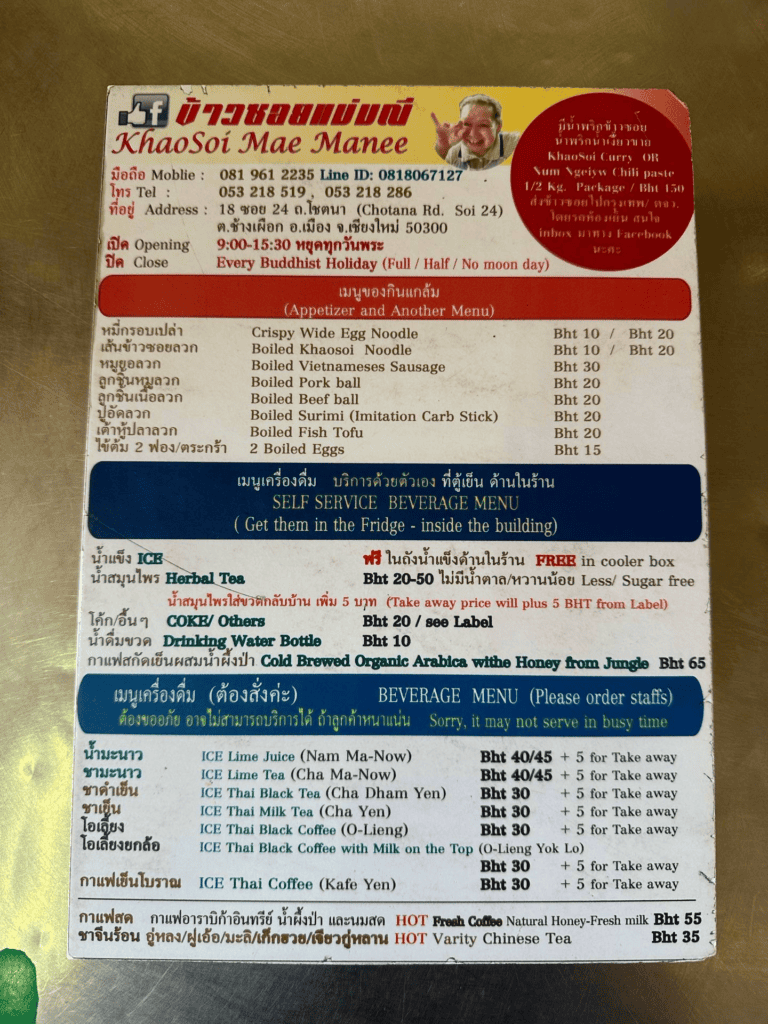









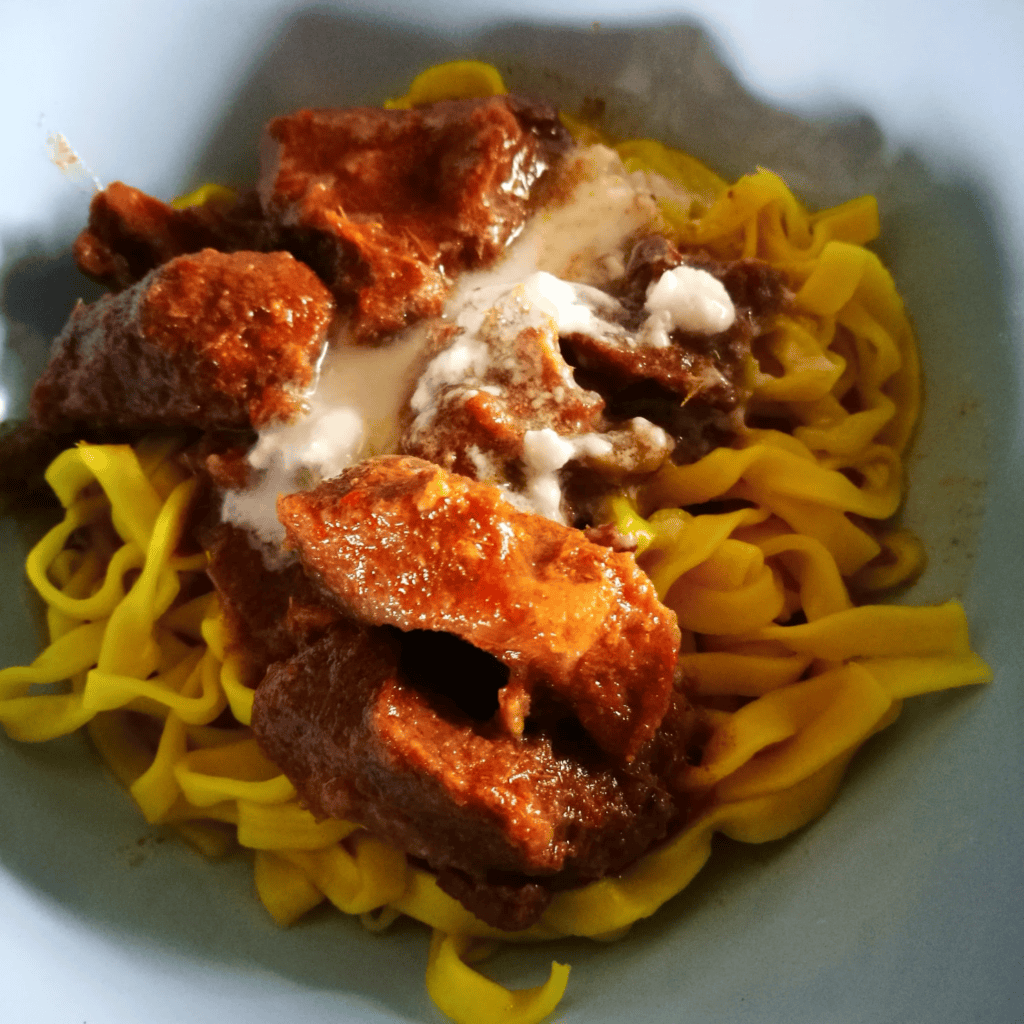
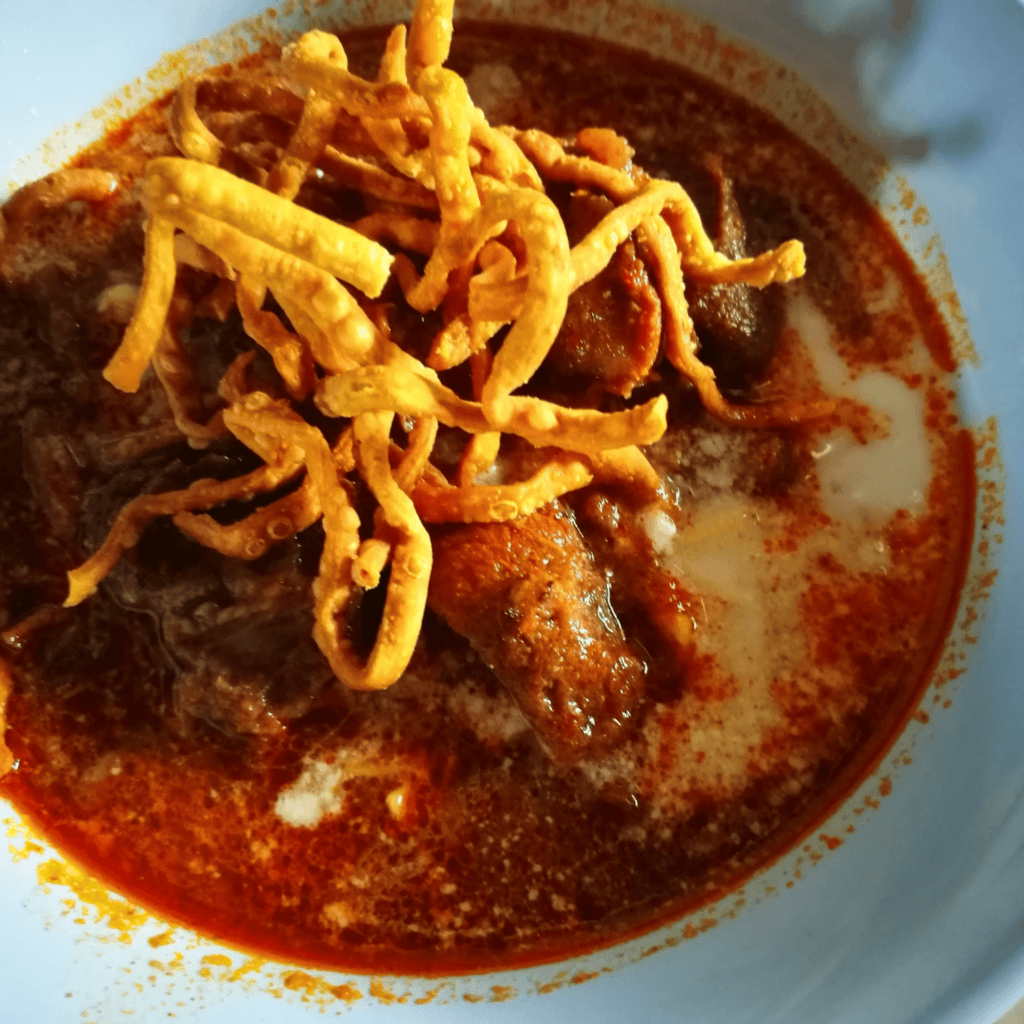
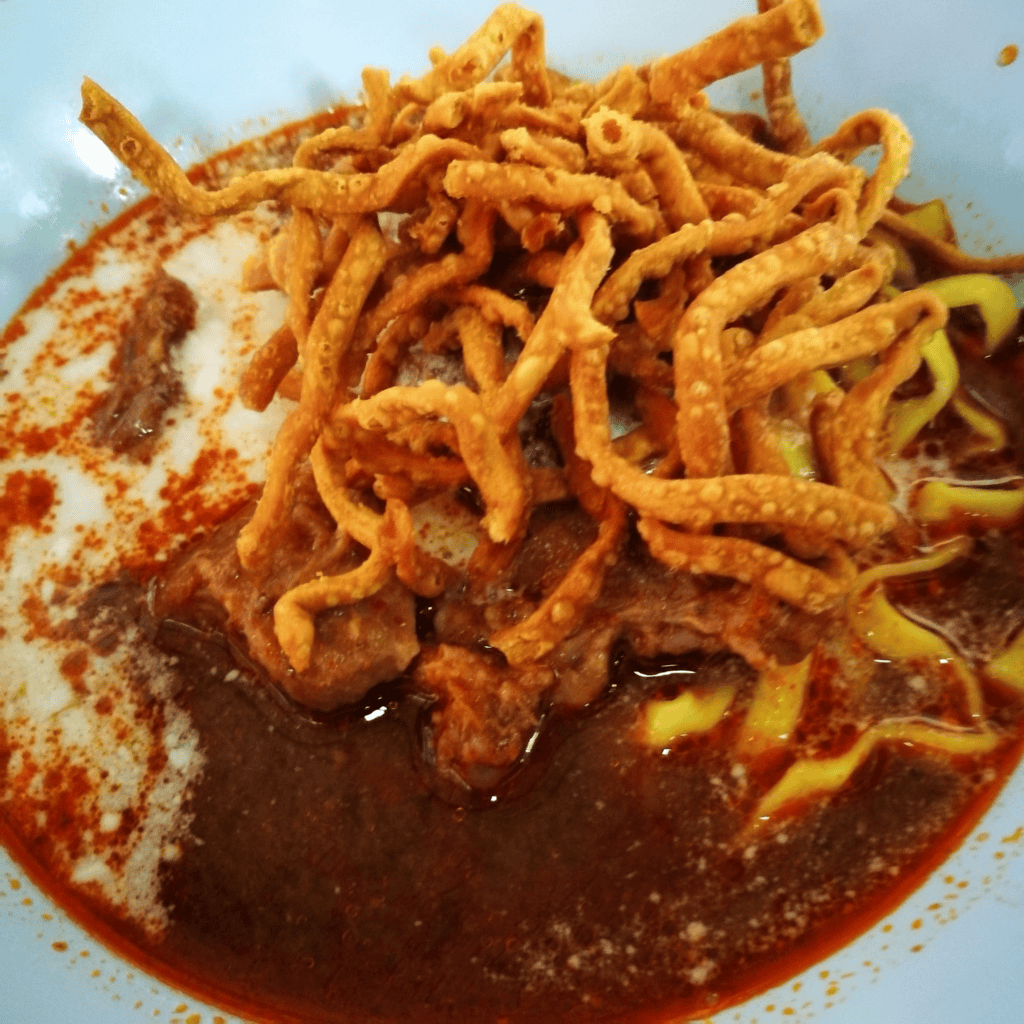

Kabmanee Pholkun is a plump, friendly and sweet-talking grandmother, which is a stark contrast to the spicy khao soi she cooks. But it’s a nice contrast. I can’t count the number of times I’ve eaten khao soi made by my grandmother over the years I’ve been in Chiang Mai. However, I remember one time clearly. She jokingly told me that to really eat khao soi, you have to go into the alley. And yes, Grandma Kabmanee’s khao soi shop, ‘Khao Soi Mae Manee’, is in the alley.
Although khao soi is one of the top foods when people think of Chiang Mai, the truth is that khao soi is not a staple in the daily lives of city dwellers. Very few Chiang Mai people will line up to eat khao soi at a famous restaurant recommended in a guidebook or on social media. The restaurants that city dwellers actually eat at are almost entirely different from the restaurants that tourists eat at.
Khao Soi Mae Mani has been open since 1984. It is located in a small alley that connects to a larger alley (Chotana 24) on Chotana Road, opposite Chiang Mai City Hall. Grandma Kabmani’s shop was here even before Chiang Mai moved its government office from the city center to this location.
“My mother always insisted that side dishes must not be served together in a bowl. Everything must be served in separate bowls. Eat the shallots alone when you feel the spiciness, followed by pickled vegetables to cut the richness. If these are served in a bowl, the curry will seep into the side dishes, and the side dishes will lose their flavor.
“We used to make our own Khao Soi noodles. Since my mother is old and we are old too, we can’t do it anymore. But we still make the pickled mustard greens, curry paste, and chili paste,” said Mae Naengnoi Chatthong, the successor to Khao Soi Mae Mani.
Mae Naeng Noi said that her family’s morning routine has been like this for almost 40 years. She is the middle daughter of three siblings. Before opening the shop, Grandma Kabmani worked in many different jobs, as a housekeeper in a foreign family, selling grilled and dried bananas, before opening a restaurant at home, selling Khao Soi, noodles, Khanom Jeen, and desserts. Grandma Kabmani and her husband saved up enough money to build a dormitory for rent on the upper floor of the shop. At the same time, they developed the Khao Soi recipe in the city style until it became the signature dish of the shop.
“People often ask where I got the Khao Soi recipe from. I told them it was the recipe that city people eat at home. The curry must be thick and the ingredients must be complete, which is perfect with coconut milk and side dishes. I learned from them and gradually developed my own Khao Soi chili paste recipe until it became my own.”
Mae Naeng Noi explained the origin of the recipe simply. However, what I noticed when compared to other famous Khao Soi restaurants was the lack of compromise. While most Khao Soi restaurants take into account foreigners or locals, they may reduce the thickness of the curry paste, Mae Mani’s recipe is thick and creamy, while the Khao Soi curry is a little thicker than the chili paste. The spiciness is just right, to the point that those who don’t eat spicy food might sweat a little (which the side dishes that are freshly made every day help alleviate). And most importantly, if you know that you’re going to eat Khao Soi at this restaurant on a certain day, don’t wear a white shirt. If it gets dirty, it’s very difficult to wash it off.
“My mother is a very service-oriented person. Before she switched to selling only Khao Soi, she sold a variety of food. Her customers were both regulars and passersby. My mother could remember everyone’s favorite food,” said Mom Naeng Noi.
“As for Khao Soi, it became popular later. If I remember correctly, it came from students at Nawamintharachuthit Payap School. Since our restaurant was near the school, at that time the school had not yet built a fence, students would often come out to eat Khao Soi at the restaurant during lunchtime. They came so often that the teachers had to come and check on them because they thought our restaurant was a place for orgies (laughs).
“But then, it turned out that these teachers eventually became our regular customers.”
Although she grew up in a restaurant, Mae Naeng Noi did not originally intend to continue her mother’s business. She started her career working in a factory before opening her own small sewing factory. Around 2003, Grandma Kabmanee fell ill, so she had to close the restaurant to receive treatment for more than 7 months. Even after she recovered, her symptoms became chronic and the restaurant could not be opened continuously. That made the mother consult with her middle daughter about seriously continuing the business.
After spending a long time deciding, Mae Naeng Noi agreed, setting a condition that she would cut out other menus, leaving only Khao Soi, the most popular menu, from the delicious, nameless restaurant. But people remember it as Mae Kabmani’s Khao Soi shop. Around 2004, people who visited Chiang Mai remembered the restaurant that served only Khao Soi with a strong flavor as ‘Mae Mani Khao Soi’ ever since.
“When we took over the business, my mother was over sixty years old and was sick on and off, but she helped us prepare the shop all the time. Some days she would boil the noodles herself and go to the market to select the ingredients herself. She would also cut the side dishes herself. She really loved this job. For example, the knife she used to cut the onions, we saw it when it was still thick. She used it until it was very thin. Even though we told her not to do it, she still wanted to do it herself until her fingers locked,” said Mae Naeng Noi.
“When she raised her hand, customers thought she was raising her hand to show her love, but in reality, she didn’t. Her fingers locked! (laughs) But it became an image that most people remember,” said Mae Naeng Noi, pointing to a picture of Mae Mani raising the mini-heart symbol on the menu board on the wall.
There were many other details that Mae Naeng Noi was taught by Grandma Kabmani, which became the character of the shop. “For example, the choice of chicken meat, we are different from other shops that usually serve chicken legs. We serve chicken breast. This was during the bird flu outbreak. My mother said that customers didn’t dare to order chicken dishes because they served legs, which had both bones and blood. So, we switched to using chicken breast instead, which suited our shop’s needs. Because our curry is already quite thick, using chicken breast makes it easier to eat, and we’ve been using it ever since, but now we’ve gone back to serving chicken legs.
“Or like having a variety of Khao Soi menus, it came from my mother’s concern that customers would get bored. After we reduced the menu to just Khao Soi, my mother thought that we should have noodles and meat to choose from. So we have everything from Khao Soi noodles, crispy noodles, wontons, to instant noodles, including pork, chicken, beef, intestines, pork sausage, fish, crab sticks, and even pig’s ears, including Khao Soi without meat. If it’s a regular customer, my mother can still remember which ones like to eat.”
Therefore, it’s not strange that with such taste and passion, Khao Soi Mae Manee has won many food awards. From being voted the best Khao Soi in Chiang Mai by the radio program, Music and Colors in 2001, to being featured in leading magazines and TV shows both in Thailand and abroad, to being a destination for many foodies, bloggers, and world-class food YouTubers. And of course, when Michelin made a list of delicious and affordable street foods in Chiang Mai, Khao Soi Mae Manee was on the list since its first year.

“Mom worked until the last day of her life. In mid-2018, she fell ill with heart disease and was hospitalized at home. Two days before she passed away, she called us to ask if the kitchenware was complete and if she was ready to open the shop. She loved the shop so much and didn’t want any flaws or disappointment for customers,” said Mom Naengnoi, recalling Grandma Kabmanee’s last wishes.
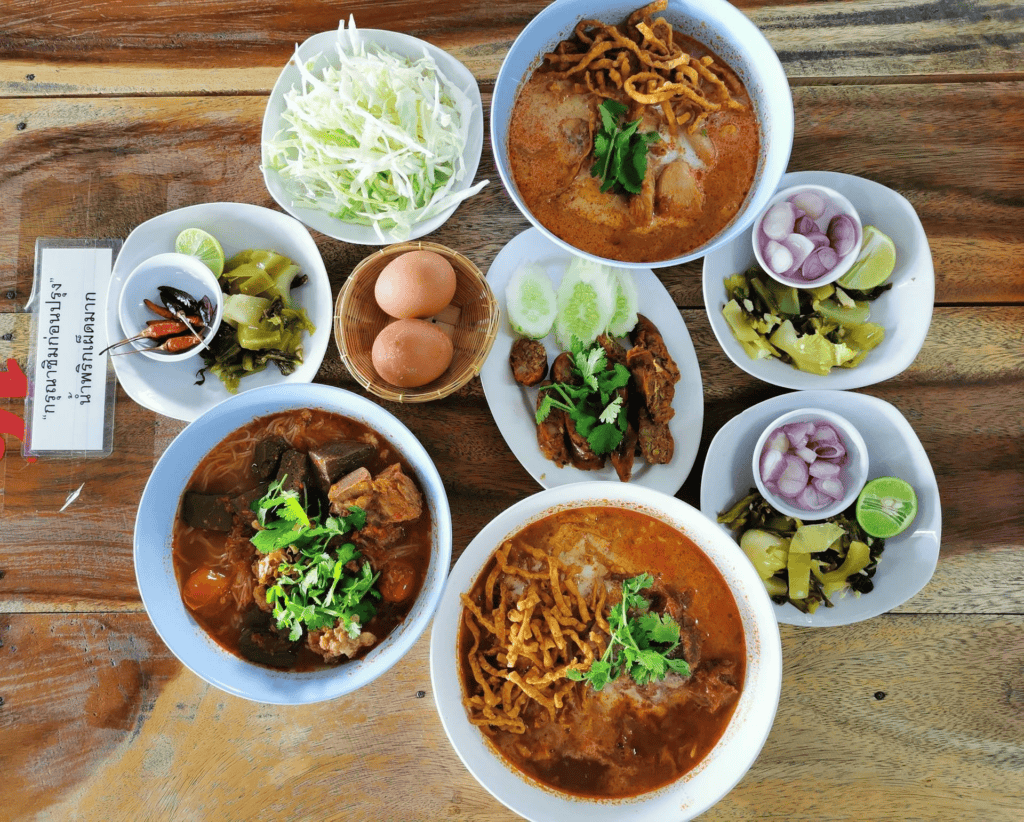






“It’s a pity that she didn’t make it when the shop won the Michelin award. She must have been so happy. But even if the shop didn’t win, the fact that Mom made Khao Soi and people liked it made me so happy,” said Mom Naengnoi with a smile.
Khao Soi Mae Mani
Location: 18 Soi Chotana 24, Chiang Mai Municipality, Chiang Mai Province 50300
Open daily from 9:00 a.m. to 3:00 p.m. (Closed on Buddhist holy days)
Tel: 081 961 2235
Khao Soi Mae Mani Branch 2
Location: 45/9 Chiang Mai-Lampang Road, Chang Phueak Subdistrict, Mueang Chiang Mai District, Chiang Mai Province 50300
Open daily from 9:00 a.m. to 5:00 p.m.
Tel: 089 955 1178
